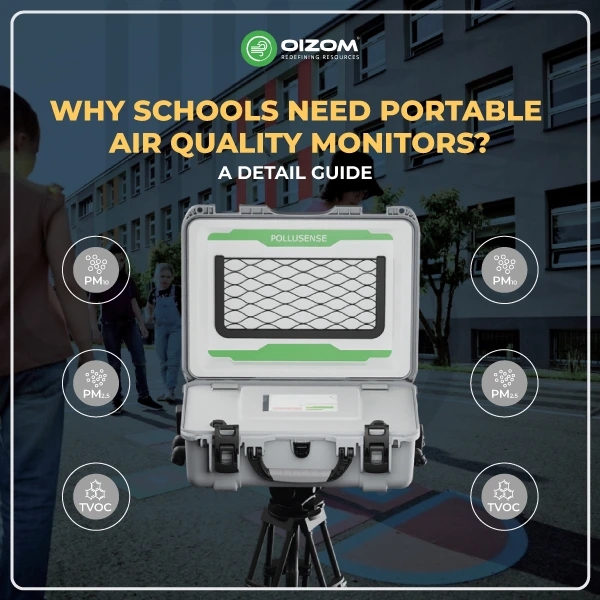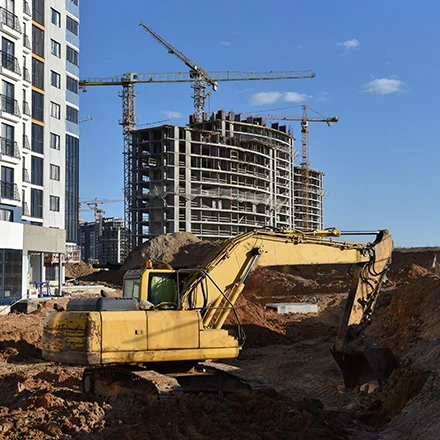The critical issue of dust control has risen to the forefront of environmental imperatives amid growing urbanisation and industrialisation. Dust, those deceptively small particles that cover our cities, bears significantly more weight than their visible presence. This particulate matter is more than an inconvenience; it is a persistent environmental aggressor that infiltrates ecosystems, degrades air quality, and poses substantial health concerns to humans.
To begin the journey of dust reduction, we must first establish a foundation of prevention. The foundation of this strategy is sustainable practices, which try to stop dust formation at its source. Watering can control dust in the fast-paced construction environment, while covering exposed items can limit its spread. The industrial sector, too, can use enclosed processes and advanced dust extraction devices to control the particle uprising.
However, sustainable practices are not limited to the confines of industry. They seep into the veins of our urban life, where collaborative transport decisions and rules that define car emissions play a critical role in the dust reduction story. Let’s explore the techniques for controlling the dust to understand its mitigation strategies.
Water
Water is the essential dust suppressor. When given a dusty environment, water’s attraction for dust particles converts the airborne into the ground, binding them together and restricting the fugitive dust’s tendency to take to the winds. This technique is especially useful for reducing dust on fine, dry soils and unpaved roads, where water-induced cohesiveness can significantly reduce dust plumes caused by automobiles.
Water can reduce dust in various ways; sprinkler systems can spread a moisturising net over large regions, such as construction sites, while water trucks give targeted moisture to smaller areas. Drip irrigation systems provide accurate water application in arid places where conservation is critical, ensuring that every drop serves the objective of dust suppression without waste.
The temporal effectiveness of water is also a factor; in windy conditions, more frequent applications are necessary. Yet, within its domain of suitability, water remains an environmentally safe method for dust control, making it a necessary tool across various dust-loaded landscapes.
Dust suppression chemicals
Used extensively on the unpaved roads that work through our landscapes, these chemicals are not confined to roads alone; they extend their services to construction sites and other dust-generative locales. Selecting a suitable dust mitigation is a decision balanced between the intended application and the level of control desired.
Calcium chloride, a hygroscopic salt, enjoys widespread use due to its cost-effectiveness and proficiency in dust abatement. Its counterpart, magnesium chloride, shares similar attributes but has a higher price tag and a marginally reduced dust control capability.
Organic options like lignosulfonate wood pulp derivatives offer a greener alternative. These biodegradable polymers are both cost-efficient and eco-friendly, aligning with the environmental consciousness of our times. Though more enduring and potent in dust suppression, synthetic polymers are an investment in longevity with a higher initial cost.
Dry strength Resins, with their viscous embrace, are another durable option. Derived from natural oils, they create a resilient and sticky barrier against dust dispersion but can be costly.
Explore our blog on effective fugitive dust control measures, in addition to learning about dust control techniques.
Encapsulation
Encapsulation represents an advanced frontier in dust control, a method where dust particles are encased within a binding medium, often polymers or resins, transforming them from potential airborne hazards to benign captives within a protective shell. This technique is invaluable when dealing with hazardous materials such as asbestos or particles from lead-based paint contaminants whose safe handling is beneficial and a health imperative.
The sources from which encapsulation can shield us are manifold:
- Asbestos-containing materials are prominent for their carcinogenic fibres.
- Lead-based paint, whose particles can wreak havoc on neurological health.
- Contaminated soil, where particle binding can prevent toxins’ spread.
- Industrial processes that may release delicate particulate matter.
Furthermore, encapsulation is a method that leans towards environmental stewardship. Encapsulation safeguards the environment and serves as a guardian of public health by preventing the liberation of hazardous dust.
Dust extraction
Dust extraction is a dynamic response to the presence of dust, a method that directly removes particulate matter from its origin. Predominantly utilised in industrial environments with a high dust proportion, this system is equally adept in residential or commercial settings, where activities like sanding or grinding liberate dust into the environment.
The architecture of a dust extraction system is both complex and efficient, comprising:
- Fan: The system’s engine draws the dusty air towards the filter.
- Filter: The core, where dust particles are intercepted and captured.
- Hood or Enclosure: The initial capture point is strategically placed to catch dust at its source.
- Ductwork: The conduits channel the dust-loaded air from the source to the filter.
In essence, dust extraction is about removing dust from our air. It is an intervention that clears the immediate atmosphere and contributes to the broader objective of air quality control. Whether in the problem of industrial production or the quiet of an office, dust extraction systems stand as vigilant defenders, maintaining the sanctity of our air and, by extension, our health.
Personal protective equipment (PPE)
Personal Protective Equipment (PPE) is the last line of defence in the dust control arena, protecting persons from the invisible harm of dust particles. PPE is the armour worn to protect against the risks of occupational dust, and it is an essential component of a comprehensive dust control strategy.
The PPE is adapted for dust mitigation and includes:
- Respirators are sophisticated devices, often equipped with filters that purify the air and capture dust particles before they can damage the respiratory tract. They range from simple particulate filters to advanced systems designed for specific industrial contaminants.
- Dust Masks: As the more basic related to respirators, dust masks provide a barrier against less toxic dust, offering a disposable, first-level shield for the nose and mouth.
- Goggles: These eye protectors are supported against fine particles that can cause irritation or damage to the eyes, ensuring that vision remains unclouded by the dust-laden environment.
- Gloves protect the hands from direct contact with dusty surfaces, preventing skin irritation and ensuring that one can operate in dusty environs comfortably and safely.
- Tyvek Suits: The full-body suits are the ultimate protective gear, encasing the wearer in a nonwoven fabric that acts as a barrier against particulates, providing head-to-toe defence.
PPE is not just equipment; it is a vital protective measure that, when employed correctly, can prevent the myriad of respiratory ailments that dust exposure precipitates.
Source Elimination or Modification
The source elimination or modification principle is at the core of dust control. The proactive approach seeks to strike at the very genesis of dust, reduce its production or alter its conditions to minimise its escape into the atmosphere.
Methods of source elimination or modification encompass a spectrum of strategies:
- Wetting Surfaces: This involves using water or dust mitigation to dampen areas prone to dust, thereby preventing the particles from becoming airborne.
- Encapsulation: Applying a binding agent to dust-prone surfaces seals the dust, holding it captive within a protective coat.
- Dust Extraction Systems: Positioned at the point of dust generation, these systems vacuum the dust directly from the source, preventing its spread.
- Process Modification: Altering operational methods to reduce the dust produced is a strategic move in dust control. This could mean adopting cutting techniques that produce less dust or modifying the workflow to contain dust production.
- Material Substitution: Where possible, replacing materials that generate dust with those that do not or using pre-treated materials less likely to produce dust can be a game-changer in dust management.
Also, check out Oizom’s blog on dust control in mines.
How Oizom Can Help?
Using advanced sensors and data analytics, Oizom systems can accurately measure dust particle concentrations in the air. This real-time monitoring allows for timely and effective responses to dust pollution. For instance, in areas where construction or industrial activities are causing elevated dust levels, Oizom’s data can prompt immediate mitigation measures such as water spraying or adjusting work schedules to reduce dust emissions.
Additionally, Oizom’s comprehensive data analysis helps identify dust pollution trends and sources, enabling long-term planning and policy-making to control dust more effectively. This is especially vital in urban areas where dust contributes significantly to air quality issues, affecting public health and the environment.
By providing actionable insights, Oizom empowers communities and authorities to make informed decisions, leading to a cleaner and healthier environment.
Enclosure or isolation
Enclosure or isolation is a strategic approach in the efforts against dust. It entails the creation of barriers, be they enclosures, booths, or entire rooms, to imprison dust particles at the source and inhibit their escape into the broader environment. This technique shines in its ability to tackle the harmful varieties of dust that pose significant health hazards, such as those issues from asbestos or lead-based operations.
Advantages of Enclosure or Isolation
The benefits of this method are manifold:
- Efficacious Containment: Enclosures and isolation rooms help to minimise the spread of harmful dust by providing a controlled environment that keeps contaminants from escaping.
- Enhanced Worker Safety: Isolating high-risk activities reduces workers’ exposure to harmful dust, safeguarding their respiratory health.
- Minimised Cross-Contamination: Such structures are instrumental in manufacturing or pharmaceutical settings, where they halt dust migration, maintaining the sanctity of sterile environments.
- Improved Air Quality: The successful reduction of dust within these confines contributes to the overall air quality, benefiting everyone nearby.
Implementations of Enclosure or Isolation
The versatility of this technique allows for various implementations:
- Enclosures: Custom-fitted around equipment or processes, these can be composed of diverse materials tailored to the requirements of the task at hand.
- Booths: Self-contained workstations are optimised environments for dust-generating activities like grinding or painting.
- Isolation Rooms: These are specially designed areas with advanced ventilation to host particularly hazardous tasks.
Ventilation
Ventilation operates on the principle of air exchange to remove enclosed spaces of particulate matter and maintain a dust-free atmosphere.
Types of Ventilation Systems
The choice of ventilation system is critical to its success:
- Natural Ventilation: This leverages the power of nature, using breezes and thermal currents to cycle air within a space. It’s most effective in areas where the natural flow of air can be harnessed.
- Mechanical Ventilation: Mechanical systems employ fans or blowers, offering a more controllable and consistently effective solution to dust control across various environments.
Determinants of Ventilation Efficiency
Several factors govern the efficiency of a ventilation system in dust management:
- Airflow Rate: The rate at which air is cycled through space directly influences the system’s ability to remove dust.
- Placement of Intakes and Outlets: Strategic placement is crucial for maximising air movement and ensuring that dust is not simply recirculated.
- Filter Quality: High-quality filters are paramount, especially for capturing fine dust particles that can escape less effective filters.
- Regular Maintenance: To maintain its integrity, a ventilation system requires consistent upkeep, from filter changes to duct inspections.
Ventilation Applications
Ventilation’s flexibility makes it applicable in a multitude of scenarios:
- Industrial Settings: Here, mechanical ventilation systems are often custom-designed to handle the specific dust loads generated by various processes.
- Construction Sites: Temporary ventilation solutions can be employed to manage dust during the building phase.
- Offices and Homes: Smaller, more discrete systems can keep dust away even in more ordinary situations, leading to a healthier interior environment.
In essence, ventilation is a vital component of dust control, adaptable to any environment where dust risks health and quality of life. Whether through natural or mechanical means, the objective remains the same: to maintain clean air by effectively removing dust.
Wet methods
Wet approaches are an essential component in the construction of dust control solutions. These methods do what dry treatments cannot: they bind dust particles to prevent them from becoming airborne and alleviate the threat of air pollution. Wet approaches operate like a soft rain, reducing dust and ensuring it remains grounded.
Advantages of Wet Methods
The virtues of wet methods are numerous:
- Potent Dust Suppression: The molecular cohesion between water and dust particles creates an aggregate too heavy to lift, effectively curbing dust emissions.
- Enhanced Indoor Air Quality: By preventing dust from rising, wet methods safeguard the air quality, providing respite especially to those with respiratory conditions.
- Universal Application: These adaptable methods can be employed on various surfaces and within diverse environments.
Regular Cleaning and Maintenance
Regular cleaning and maintenance form the bedrock of preventative measures, ensuring that dust does not accumulate to levels where it becomes a significant health hazard or impediment to functionality.
Significance of Regular Cleaning and Maintenance
The impact of regular cleaning and maintenance extends beyond mere aesthetics:
- Respiratory Health: By keeping dust at bay, we can avoid the respiratory problems that it may worsen or cause.
- Allergy Prevention: Regular cleaning can significantly reduce the presence of dust mites and other allergens, mitigating allergic responses.
- Surface Integrity: Dust, over time, can spoil surfaces; regular removal protects the longevity and appearance of these surfaces.
- Visibility and Aesthetics: A dust-free environment is healthier, more visually appealing, and conducive to productivity.
Effective Cleaning and Maintenance Practices
To harness the full potential of regular cleaning:
- Scheduled Cleaning: A systematic approach to cleaning, with clearly delineated responsibilities, ensures no area is neglected.
- Tailored Cleaning Approaches: Different areas and equipment may require specific cleaning methods; adhering to the recommended practices will yield the best results.
- Quality Supplies: High-quality cleaning supplies, particularly those that trap dust rather than displace it, are essential—microfiber cloths and HEPA filter vacuums are exemplary tools.
Proper handling and storage
Effective dust management begins not when dust is released into the air but when it is still a part of materials handled in the workplace. Proper handling and storage are pivotal in preventing dust from becoming a broader issue, with the benefits of these practices resonating through the health of employees and the cleanliness of the environment.
Advantages of Proper Handling and Storage
- Minimised Dust Production: Careful handling and use of appropriate containers can drastically reduce the dust generated during the movement and storage of materials.
- Containment of Dust: Keeping materials covered and swiftly addressing spills limits the chances of dust finding its way into the air.
- Enhanced Air Quality: By controlling dust at its source, the overall air quality of the environment is significantly improved, which is vital for indoor settings.
- Safety and Health: Proper practices help to mitigate the health hazards associated with dust, creating a safer workplace.
Housekeeping
Housekeeping has a small effort to maintain a dust-free environment. Beyond its aesthetic benefits, it is a critical component in controlling dust and other particulates that can affect health and machinery performance.
Significance of Housekeeping
- Dust Reduction: Regular and thorough cleaning routines help to reduce dust accumulation on surfaces.
- Inhibiting Dust Dispersal: Keeping an area clean means less dust can become airborne.
- Visual Appeal and Cleanliness: A clean environment is visually pleasing and often correlates with higher productivity and professional pride.
- Surface Preservation: Dust can be abrasive; regularly cleaning surfaces ensures longevity and aesthetic quality.
Effective Housekeeping Measures
To capitalise on the benefits of housekeeping, consider the following measures:
- Microfiber Dusting: Microfiber cloths are adept at capturing dust without releasing it into the environment.
- Waste Management: Proper disposal of waste materials is essential to prevent them from becoming sources of airborne dust.
- Scheduled Cleaning: Establishing and adhering to a cleaning schedule ensures that no area is overlooked and that dust does not accumulate over time.
Conclusion
Dust pollution burdens the environment and public health, affecting the air we breathe and penetrating deep into our respiratory systems. In 2022, the World Health Organisation revealed that 99% of the world’s population breaths air that exceeds the WHO’s quality standards, emphasising the importance of combating this persistent concern. Particulate matter (PM2.5), an invisible particle, affects the purity of the air and raises the risk of cardiovascular and respiratory disorders, premature death, and developmental hazards such as low birth weight.
These harmful effects of dust underscore the urgent need for robust air quality management and stricter emission controls across sectors. Thus, addressing dust hazards is also about sustaining the complex web of inter-industry linkages, which is critical for achieving the broader aims of sustainable development.
As the world grapples with the imperatives of air quality and public health, these measures are not just recommendations but responsibilities that we, as stewards of our environment, must uphold. We can strive for a future where the air is not a vector of disease but a source of well-being if we all adhere to these practices.
FAQs
Yes, planting vegetation like grass and shrubs stabilizes soil, reducing wind erosion and minimizing airborne dust, especially in construction and mining areas.
Industries like mining, construction, manufacturing, agriculture, and transportation require dust control to comply with environmental standards and ensure worker safety.
Water spraying reduces dust by adding moisture to airborne particles, making them heavier and preventing them from becoming airborne. However, it may require frequent application to remain effective.






